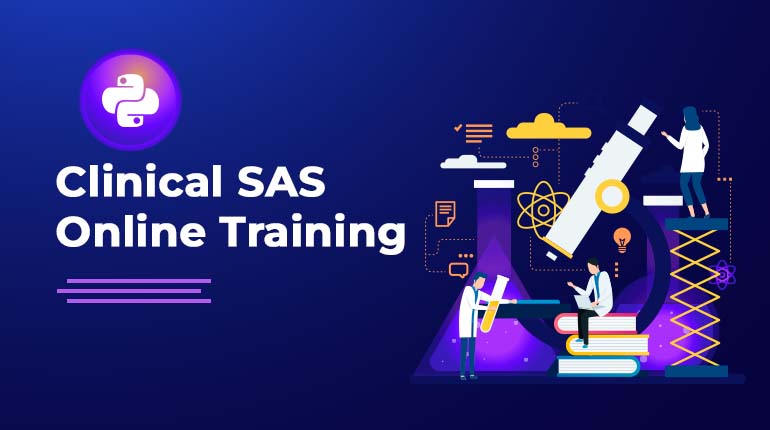
Some key features of Clinical SAS include:
-
Data management: SAS provides tools for data import, validation, cleaning, and integration. It can handle large and complex datasets, and can be used to create and maintain study databases.
-
Statistical analysis: SAS includes a wide range of procedures for data analysis, including descriptive statistics, inferential statistics, and specialized procedures for specific types of data, such as survival analysis and longitudinal data.
-
Reporting: SAS provides tools for creating detailed and accurate reports of study results, including tables, graphs, and listings. It also includes a programming language, SAS Macro, that allows for the customization of automated reports.
-
Quality control: SAS includes several features for ensuring data quality, such as data validation, auditing, and error checking.
-
Compliance: SAS is compliant with FDA regulations, and can be used to create the tables, figures, and listings required for regulatory submissions.
-
Integration: SAS can integrate with other systems and software, such as electronic data capture (EDC) systems and safety databases, to streamline the clinical trial process.
-
Platform independence: SAS can run on a variety of platforms, including Windows, Linux, and UNIX.
-
SAS Macro Language: SAS has a macro language which is a powerful tool for automating repetitive tasks, generating reports and data step logic with minimal programming.
The Clinical SAS course is typically intended for individuals who work in the pharmaceutical or clinical trial industry and are responsible for the analysis and reporting of clinical trial data. This may include:
-
Clinical data managers: who are responsible for the design, implementation, and maintenance of study databases.
-
Biostatisticians: who are responsible for the statistical analysis of clinical trial data and the creation of study reports.
-
Clinical research associates: who are responsible for monitoring the progress of clinical trials and ensuring compliance with regulatory requirements.
-
SAS programmers: who are responsible for developing and maintaining SAS programs for data management and analysis.
-
Medical writers: who are responsible for creating study reports, including tables, figures, and listings, and preparing regulatory submissions.
-
Researchers or statisticians: who are working in pharmaceutical or other healthcare related field and want to learn SAS to analyze their data.
Course Syllabus
Overview of SAS
-
- Introduction of SAS Software
- Components of SAS System
- The Architecture of SAS System
- The functionality of the SAS System
- Introduction of SAS Windows
Introduction to Clinical SAS
- SAS role in Clinical Research
- Introduction to Clinical trial
- Protocol and role of Protocol
- Clinical Trials Data Structures
- Classes of clinical trials data
- Key CDISC principals and terms
CDISC SDTM Data Model
- Overview of SDTM
- Purpose of SDTM
- Domain
- Variables
- Role Concept
- Core Variable Concept
- General Observation Classes
- Controlled Terminology
- SDTM Mapping Process
- SAS Program for NON SDTM to SDTM
- Implement SDTM concept on SAS
- Purpose of define.xml
CDISC ADAM Data Model
- Introduction to ADAM
- Traceability
- ADAM datasets Workflow
- ADAM Related Process
- Data Metadata
- Variable Metadata
- Variable Value Level Metadata
- Controlled Terminology
- Core variables
- The Standard ADAM
- ADSL Concept
- Overview of BDS
Statistic and Report Clinical Trial Result
- Descriptive statistics for clinical trials data
- Create output data sets from statistical procedures
- PROC REPORT and PROC TABULATE to generate tables and listings
- Creating Bar and Pie charts using PROC GPLOT and PROC GCHART
Basic Statistics
- Data Exploration
- Data Preparation
- Descriptive Statistics
- Hypothesis Testing
- Concept of hypothesis testing
Creating Clinical Trial Graphs
- Overview of Clinical
- Trial Graphs
- Scatter Plot
- Line Plot
- Bar Chart
- Box Plot
- Odds Ratio Plot
Implementation of ADAM on SAS
- Creating ADAM
- Types of ADAM
- Use of ADSL
- Use of ADAE
- Use of ADEF
- Use of ADTTE
Transform Clinical Trial Data
- Windowing techniques
- Transpose SAS data sets
- Carry forward techniques to clinical trials data
- Calculate change from baseline results
- Windowing concept
Macro Programming
- Introduction to Macro Programming
- Calling macros
- Automate programs
- Use MPRINT
- Use SYMBOLGEN
- Use MLOGIC
- Use MACROGEN
- Use INCLUDE
PROC SQL
- Introduction to PROC SQL
- PROC SQL Tables
- Creating Tables using PROC SQL
- Managing Tables using PROC SQL
Exporting Data
- Changes in Business Environment
- Changes in Technology
- Changes in Regulations
- Changes in Standard
- SAS Software in Clinical Trail Industry
Advance SAS Topic
ProcSql
Create detail reports by using set operators in the SQL method, linking tables, or working with a single table.
Work with a single table, join tables, or use set operators in the SQL method to generate summary reports.
Create in-line views and subqueries as part of a SQL procedure step.
Compare using the SQL procedure to solve an issue to using standard SAS programming methods.Macro
Within the SAS Macro Language, create and employ user-defined and automatic macro variables.
Use the SAS Macro Language to define and call macros to automate programmes.
Recognize how to use macro functions.Introduction of SAS and Clinical research
- SAS role in Clinical Research.
- What is Clinical trial?
- What is Protocol and role of Protocol in Clinical Research?
- Which is playing main role in Clinical Research?
Health Research Data Structures
- List the several types of data from clinical trials (demographic, lab, baseline, concomitant medication, etc.).
- Name the essential concepts and words used by CDISC.
- Describe the CDISC SDTM data model's composition and function.
- Describe the CDISC ADaM data model's composition and objectives.
- Describe define.xml's components and intended use.
Clinical Trials Data Transformation
- Utilize windowing and categorising techniques with data from clinical studies.
- reposition SAS data sets.
- Utilize "observation carry forward" methods for analysing clinical trial data (LOCF, BOCF, WOCF).
- Calculate the results for "change from baseline."
-
Clinical SAS FAQ’s:
SAS can read data from various file types such as Excel, CSV, and text files. The most common way to import data is to use the "PROC IMPORT" statement.
SAS provides a variety of procedures for statistical analysis, such as PROC MEANS for descriptive statistics, PROC GLM for ANOVA, and PROC REG for regression.
SAS provides several procedures for creating tables and figures, such as PROC TABULATE for creating cross-tabulations, PROC REPORT for creating detailed tables, and PROC GPLOT for creating graphs.
SAS provides several tools for code validation, such as the "OPTIONS VALIDVARNAME" statement, which checks variable names for compliance with SAS naming conventions.
SAS macros are created using the "%MACRO" and "%MEND" statements and can be used to automate repetitive tasks and simplify code.
SAS datasets are created using the "DATA" statement, and can be created from raw data or from other SAS datasets.
SAS datasets can be merged using the "PROC SQL" statement, or using the "MERGE" statement in a DATA step.
SAS provides several options for handling missing data, such as using the "MISSING" statement, which sets a value to represent missing data, and the "NMISS" and "N" functions, which provide information about the number of missing and non-missing observations.
SAS programs can be annotated using comments, which are indicated by an asterisk (*) in the first column of a line.
SAS provides several options for troubleshooting errors, such as the "OPTIONS MSGLEVEL" statement, which controls the level of messages displayed, and the "PROC PRINT" statement, which can be used to display the values of variables for debugging.
